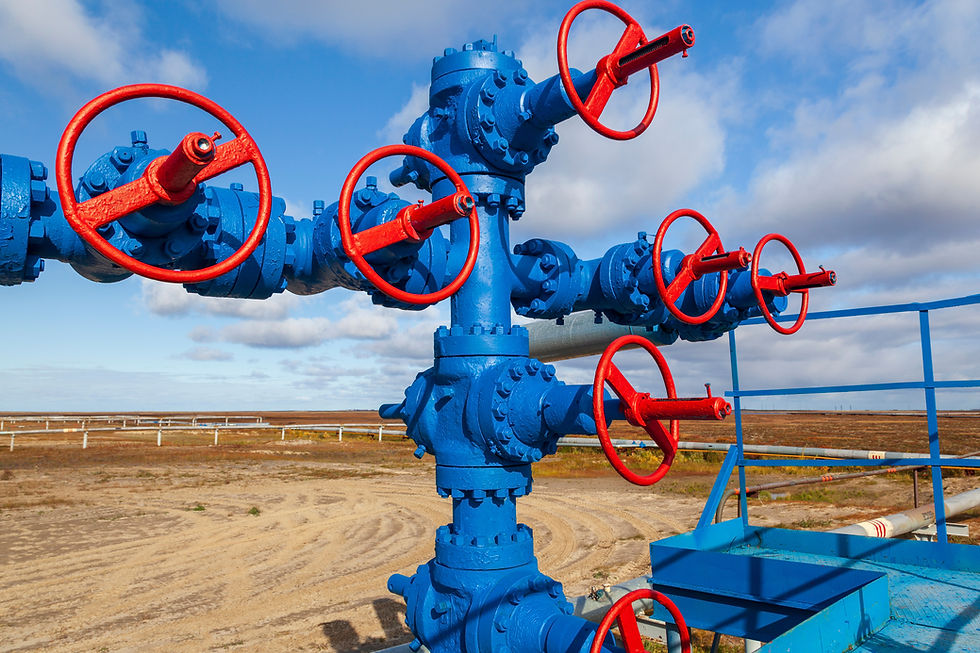Regulation and Oversight of Pipelines Carrying Natural Gas Liquids
- CEPM Staff
- Oct 2, 2020
- 4 min read

Regulators and legislators are taking a new look at regulation of the pipelines that carry highly valuable gas liquids from the fracking fields of North America to the processing facilities and refineries that convert these liquids into plastics, fuels, and chemical products. The formerly quiet backwater of hazardous liquids transport is now achieving new prominence in Pennsylvania, especially, with the Falcon pipeline serving Shell’s new ethane cracker in Beaver County, and Sunoco’s high-profile and controversial Mariner East projects traversing the Commonwealth.
Background
The U.S. Department of Transportation’s Pipeline & Hazardous Materials Safety Administration (PHMSA) has authority to prescribe safety standards relating to the operation and maintenance of natural gas, petroleum, and hazardous materials pipelines. These include “any pipeline that transports a highly volatile liquid,” which is defined as “a hazardous liquid which will form a vapor cloud when released to the atmosphere and which has a vapor pressure exceeding 276kPa at 37.8℃ [40 pounds per square inch at 100o F].” Highly volatile liquids commonly transported by pipeline include natural gas liquids – ethane, propane, butane, isobutane, pentanes. Part 195 of Title 49 of the Code of Federal Regulations outlines required processes for annual accident and safety related condition reporting as well as design requirements, construction, pressure testing, operation and maintenance, qualification of personnel and corrosion control.
While PHMSA provides federal oversight of pipeline standards in the United States, the process it outlines is run almost entirely by states under a federal/state partnership. This system allows a “certified state” to accept intrastate regulatory, inspection, and enforcement responsibilities. Annual certification requires a showing that the state has adopted minimum federal regulations and has injunctive and monetary sanctions that are substantially the same as those established by federal pipeline safety laws. While 48 states are certified for natural gas, only 15 states are certified in 2019 under the Hazardous Liquids Program, including Pennsylvania.
The Pennsylvania Public Utility Commission (PUC) monitors pipeline safety through its Pipeline Safety Division. Pursuant to its own regulations the PUC enforces federal safety standards with respect to these intrastate transmission pipelines. Intrastate transmission of “natural or artificial gas… or other fluid substance” is further regulated as a public utility service under Section 102 of the Pennsylvania Public Utility Code, and can be subject to additional state requirements. The regulatory landscape surrounding the development and construction of intrastate natural gas liquids pipelines depends on the regulatory requirements of individual states as well as the PHMSA base requirements; PHMSA’s regulations serve as a guidepost, allowing states to adopt more stringent regulations if they so choose.
PHMSA regulation is chiefly focused on identifying and preventing harm from pipeline leaks and releases that can affect populated areas, drinking water sources, commercially navigable waterways, and sensitive features of the natural environment. These are collectively known as high-consequence areas. The greatest risks from gas liquids pipelines arise from leaks or ruptures. Risk assessments can determine how to plan for emergency procedures, maintenance protocols, and designs.
It can be difficult to estimate potential impacts in light of the sometimes changing mix of liquids typically conveyed in such pipelines. The pipeline developer Kinder Morgan has published a chart indicating the health and safety hazards associated with each of these petroleum substances when transported by pipeline. For example, ethane is a highly volatile liquid which evaporates quickly into a colorless, odorless gas when released into the atmosphere; it is highly flammable and can be harmful or fatal if inhaled or absorbed through the skin. In a study commissioned by the Middletown Coalition for Community Safety, Schmid & Company examined potential impacts of the Mariner East II Pipeline. The study notes that atmospheric release of ethane in large enough concentrations creates a risk of asphyxiation, while the presence of ethane in water is of concern, but is not regarded as acutely toxic to organisms.
Recent Developments
The PUC recently announced that it is seeking public comment on proposed upgrades to its pipeline safety rules “that would more comprehensively regulate public utilities transporting petroleum products and other hazardous materials.” (See related story.)
PUC Chair Gladys Brown testified to the General Assembly in February in a budget hearing that the PUC is seeking to bolster natural gas pipeline safety by adding at least four more safety inspectors to the current statewide roster of fifteen. Currently, these fifteen safety inspectors bear responsibility for monitoring and enforcement for 48,100 miles of natural gas distribution and transmission lines, including the relatively new gas liquids transmission pipelines that have attracted both enforcement and regulatory attention. The Pennsylvania General Assembly is considering an array of pipeline bills in the current 2019-20 legislative session. Many of these deal with safety concerns, PUC regulation, and emergency management coordination with local governments.
In Congress, the current authorization for PHMSA runs out September 30 of this year. The House is considering a strengthened pipeline safety bill, the Safer Pipelines Act of 2019, but prospects for passage by Congress and signature by the President in this timeframe remain uncertain. There are also differences in views on whether PHMSA’s enforcement tools should be expanded. It may be that substantive changes to PHMSA authority will be deferred and the agency funded under one or more continuing resolutions if agreement cannot be reached in the next several months.



Comments